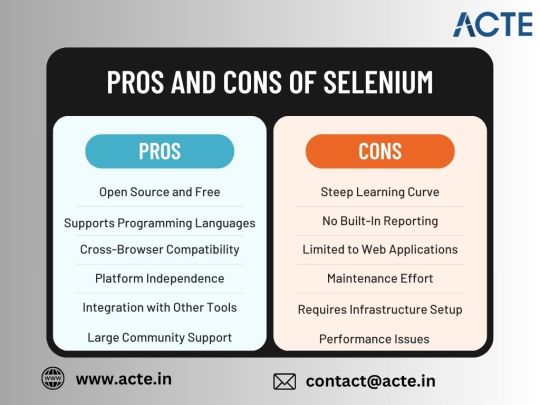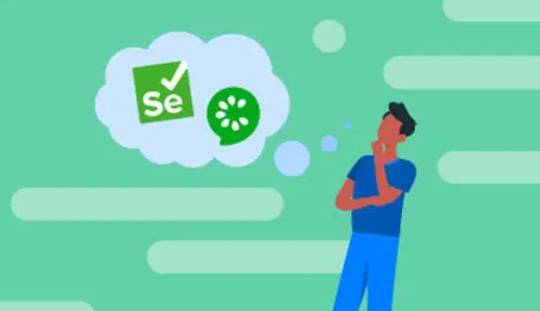#selenium javascript tutorial for beginners
Explore tagged Tumblr posts
Text
AI Automated Testing Course with Venkatesh (Rahul Shetty) Join our AI Automated Testing Course with Venkatesh (Rahul Shetty) and learn how to test software using smart AI tools. This easy-to-follow course helps you save time, find bugs faster, and grow your skills for future tech jobs. To know more about us visit https://rahulshettyacademy.com/
#ai generator tester#ai software testing#ai automated testing#ai in testing software#playwright automation javascript#playwright javascript tutorial#playwright python tutorial#scrapy playwright tutorial#api testing using postman#online postman api testing#postman automation api testing#postman automated testing#postman performance testing#postman tutorial for api testing#free api for postman testing#api testing postman tutorial#postman tutorial for beginners#postman api performance testing#automate api testing in postman#java automation testing#automation testing selenium with java#automation testing java selenium#java selenium automation testing#python selenium automation#selenium with python automation testing#selenium testing with python#automation with selenium python#selenium automation with python#python and selenium tutorial#cypress automation training
0 notes
Text
Best Programming Languages for Automation Testing Beginners
Stepping into the world of automation testing can feel overwhelming at first—especially when it comes to choosing the right programming language. The good news? You don’t need to be a software developer to learn automation testing. What you do need is a solid grasp of one programming language that aligns well with testing tools and frameworks.
If you're planning to enroll in Automation Testing Classes in Pune, you’ll likely start by learning one of these beginner-friendly languages. Let’s explore the best options to begin your journey in test automation.
1. Java – The Most Popular Choice
Java is one of the most widely used languages in automation testing, especially with Selenium WebDriver. Its strong community support, abundance of learning resources, and wide adoption by companies make it a top choice for beginners.
Why Java?
Seamless integration with Selenium, TestNG, Appium, and other tools
Strong object-oriented structure, which helps in building reusable frameworks
Tons of tutorials and documentation available for self-study
If you're attending structured Automation Testing Classes in Pune, chances are you'll be introduced to Java early in the course.
2. Python – Simple and Readable
Python is becoming increasingly popular among new testers due to its simple syntax and clean code structure. It’s beginner-friendly and versatile, making it ideal for those who are intimidated by traditional programming languages.
Why Python?
Shorter learning curve for non-coders
Compatible with testing tools like PyTest, Selenium, and Robot Framework
Growing use in API and AI-based testing
Python is an excellent starting point if you're looking to transition from manual to automation testing without getting bogged down by complex code.
3. JavaScript – For Web-Focused Testers
If your focus is web testing or front-end automation, JavaScript is a strong contender. Modern tools like Cypress and Playwright use JavaScript or TypeScript and offer powerful features for end-to-end testing.
Why JavaScript?
Great for full-stack testers or those working in JavaScript-heavy environments
Tools like Cypress and Playwright are quick, modern, and developer-friendly
Ideal for testers who work closely with frontend development teams
Enrolling in Automation Testing Classes in Pune that include modern web automation tools will often expose you to JavaScript-based frameworks.
4. C# – A Strong Option for .NET Environments
C# is widely used in organizations that rely on Microsoft technologies. Paired with Selenium and NUnit, it provides robust support for automation in Windows-based systems.
Why C#?
Well-suited for testers working in .NET development environments
Clean syntax and strong performance
Easy integration with Visual Studio and Azure DevOps
While not as commonly taught in beginner courses as Java or Python, C# is worth considering if you're targeting .NET companies.
Final Thoughts: Choose One and Go Deep
It’s easy to get distracted by all the options, but remember: you don’t need to learn every language. Start with one that aligns with your course or career goals and go deep. Java and Python are often recommended for beginners due to their simplicity, popularity, and wide tool compatibility.
If you're still unsure, joining a structured program like the Automation Testing Classes in Pune offered by trusted institutes can guide your choice based on current industry demand and job market trends.
About Skillio
Skillio (formerly Testing Shastra) is Pune’s trusted name in software testing education. Known for its job-focused curriculum, Skillio trains students in top automation tools and programming languages, helping them build real-world skills from day one. Whether you’re starting fresh or upskilling, Skillio’s expert-led Automation Testing Classes in Pune are designed to get you job-ready fast.
To get more information about such IT courses from Skillio,
Contact details —
Website: https://helloskillio.com/
Address: 504, Ganeesham E, Pimple Saudagar, Pune.
Email: [email protected]
Get directions
0 notes
Text
Web Scraping 101: Everything You Need to Know in 2025

🕸️ What Is Web Scraping? An Introduction
Web scraping—also referred to as web data extraction—is the process of collecting structured information from websites using automated scripts or tools. Initially driven by simple scripts, it has now evolved into a core component of modern data strategies for competitive research, price monitoring, SEO, market intelligence, and more.
If you’re wondering “What is the introduction of web scraping?” — it’s this: the ability to turn unstructured web content into organized datasets businesses can use to make smarter, faster decisions.
💡 What Is Web Scraping Used For?
Businesses and developers alike use web scraping to:
Monitor competitors’ pricing and SEO rankings
Extract leads from directories or online marketplaces
Track product listings, reviews, and inventory
Aggregate news, blogs, and social content for trend analysis
Fuel AI models with large datasets from the open web
Whether it’s web scraping using Python, browser-based tools, or cloud APIs, the use cases are growing fast across marketing, research, and automation.
🔍 Examples of Web Scraping in Action
What is an example of web scraping?
A real estate firm scrapes listing data (price, location, features) from property websites to build a market dashboard.
An eCommerce brand scrapes competitor prices daily to adjust its own pricing in real time.
A SaaS company uses BeautifulSoup in Python to extract product reviews and social proof for sentiment analysis.
For many, web scraping is the first step in automating decision-making and building data pipelines for BI platforms.
⚖️ Is Web Scraping Legal?
Yes—if done ethically and responsibly. While scraping public data is legal in many jurisdictions, scraping private, gated, or copyrighted content can lead to violations.
To stay compliant:
Respect robots.txt rules
Avoid scraping personal or sensitive data
Prefer API access where possible
Follow website terms of service
If you’re wondering “Is web scraping legal?”—the answer lies in how you scrape and what you scrape.
🧠 Web Scraping with Python: Tools & Libraries
What is web scraping in Python? Python is the most popular language for scraping because of its ease of use and strong ecosystem.
Popular Python libraries for web scraping include:
BeautifulSoup – simple and effective for HTML parsing
Requests – handles HTTP requests
Selenium – ideal for dynamic JavaScript-heavy pages
Scrapy – robust framework for large-scale scraping projects
Puppeteer (via Node.js) – for advanced browser emulation
These tools are often used in tutorials like “Web scraping using Python BeautifulSoup” or “Python web scraping library for beginners.”
⚙️ DIY vs. Managed Web Scraping
You can choose between:
DIY scraping: Full control, requires dev resources
Managed scraping: Outsourced to experts, ideal for scale or non-technical teams
Use managed scraping services for large-scale needs, or build Python-based scrapers for targeted projects using frameworks and libraries mentioned above.
🚧 Challenges in Web Scraping (and How to Overcome Them)
Modern websites often include:
JavaScript rendering
CAPTCHA protection
Rate limiting and dynamic loading
To solve this:
Use rotating proxies
Implement headless browsers like Selenium
Leverage AI-powered scraping for content variation and structure detection
Deploy scrapers on cloud platforms using containers (e.g., Docker + AWS)
🔐 Ethical and Legal Best Practices
Scraping must balance business innovation with user privacy and legal integrity. Ethical scraping includes:
Minimal server load
Clear attribution
Honoring opt-out mechanisms
This ensures long-term scalability and compliance for enterprise-grade web scraping systems.
🔮 The Future of Web Scraping
As demand for real-time analytics and AI training data grows, scraping is becoming:
Smarter (AI-enhanced)
Faster (real-time extraction)
Scalable (cloud-native deployments)
From developers using BeautifulSoup or Scrapy, to businesses leveraging API-fed dashboards, web scraping is central to turning online information into strategic insights.
📘 Summary: Web Scraping 101 in 2025
Web scraping in 2025 is the automated collection of website data, widely used for SEO monitoring, price tracking, lead generation, and competitive research. It relies on powerful tools like BeautifulSoup, Selenium, and Scrapy, especially within Python environments. While scraping publicly available data is generally legal, it's crucial to follow website terms of service and ethical guidelines to avoid compliance issues. Despite challenges like dynamic content and anti-scraping defenses, the use of AI and cloud-based infrastructure is making web scraping smarter, faster, and more scalable than ever—transforming it into a cornerstone of modern data strategies.
🔗 Want to Build or Scale Your AI-Powered Scraping Strategy?
Whether you're exploring AI-driven tools, training models on web data, or integrating smart automation into your data workflows—AI is transforming how web scraping works at scale.
👉 Find AI Agencies specialized in intelligent web scraping on Catch Experts,
📲 Stay connected for the latest in AI, data automation, and scraping innovation:
💼 LinkedIn
🐦 Twitter
📸 Instagram
👍 Facebook
▶️ YouTube
#web scraping#what is web scraping#web scraping examples#AI-powered scraping#Python web scraping#web scraping tools#BeautifulSoup Python#web scraping using Python#ethical web scraping#web scraping 101#is web scraping legal#web scraping in 2025#web scraping libraries#data scraping for business#automated data extraction#AI and web scraping#cloud scraping solutions#scalable web scraping#managed scraping services#web scraping with AI
0 notes
Text
The Usefulness of Selenium: Key Benefits and Applications
Selenium is one of the most trusted and widely-used automation tools in the software testing world. It’s especially popular for web application testing, and its flexibility, open-source nature, and community support have made it a favorite among QA professionals and developers alike. Embracing Selenium’s capabilities becomes even more accessible and impactful with Selenium Certification Training.

Let's explore what makes Selenium so useful and how it's applied in real-world scenarios.
Cross-Browser and Cross-Platform Testing
Selenium allows testers to run automated tests on multiple browsers like Chrome, Firefox, Safari, Edge, and Internet Explorer. This ensures your web application behaves consistently across different environments. It also supports various operating systems, including Windows, macOS, and Linux, making it highly versatile.
Supports Multiple Programming Languages
One of Selenium’s biggest strengths is its support for several programming languages. Whether you're comfortable with Java, Python, C#, Ruby, or JavaScript, Selenium lets you write your test scripts in the language you know best. This lowers the learning curve and makes it easier to integrate into existing projects.
Integration with Modern Development Workflows
Selenium fits perfectly into today’s DevOps and Agile environments. It integrates easily with CI/CD tools like Jenkins, GitLab, Docker, and Maven, enabling faster development cycles and automated regression testing. This streamlines the delivery of high-quality software products. With the aid of Best Online Training & Placement Programs, which offer comprehensive training and job placement support to anyone looking to develop their talents, it’s easier to learn this tool and advance your career.

Open-Source and Community-Driven
Selenium is free and open-source, which removes cost barriers and makes it accessible for individuals and teams of all sizes. Plus, it has a large, active community that regularly contributes updates, plugins, tutorials, and support, making it easy to find solutions and stay up to date.
Extensive Testing Capabilities
Selenium isn’t limited to simple tasks like clicking buttons or filling out forms. It’s powerful enough to automate complex user scenarios, including dynamic content, AJAX calls, drag-and-drop interactions, and more. Selenium WebDriver, in particular, allows fine-grained control over browser interactions.
Parallel and Remote Test Execution
Using Selenium Grid, testers can run tests in parallel across multiple machines and browsers. This significantly speeds up the testing process and is especially helpful for large-scale applications that require extensive coverage and faster feedback loops.
Real-World Applications
E-commerce websites use Selenium to test customer journeys, payment processes, and product filtering.
Banking apps rely on Selenium for validating secure login, transactions, and dashboards.
Healthcare platforms test appointment systems, patient records, and data integrity.
Educational portals use it for automating course enrollment, content access, and assessments.
Conclusion
Selenium continues to lead the way in web automation testing thanks to its flexibility, community support, and integration capabilities. It helps organizations ensure quality, save time, and release products faster—all while reducing manual effort. Whether you're a beginner tester or part of an enterprise QA team, Selenium is a valuable tool worth mastering.
0 notes
Text
What is the Best Automated Testing with Selenium Training?
In today's fast-paced software industry, automation testing has become a necessity. Selenium, the most popular automation testing tool, empowers testers to automate web applications effectively. If you are looking for the best Selenium training online, this guide will help you understand what makes a Selenium certification course valuable and how you can enhance your software testing skills.
Why Learn Selenium?
In today’s fast-paced software development world, automation testing has become a crucial element to ensure the quality and performance of applications. Among various automation testing tools, Selenium stands out as one of the most popular and widely used frameworks. But why should you learn Selenium, and what makes it the go-to choice for both beginners and experienced QA professionals? Let’s dive deeper into the reasons why mastering Selenium can be a game-changer for your career.
1. Industry Demand and High Employability
Selenium skills are highly sought after in the IT industry. With an increasing emphasis on agile practices and continuous integration/continuous deployment (CI/CD) pipelines, organizations are on the lookout for professionals who can automate testing efficiently. By learning Selenium, you become eligible for roles like Automation Tester, QA Engineer, and Test Lead, giving your career a significant boost.
2. Open-Source and Cost-Effective
One of the biggest advantages of Selenium is that it’s open-source and free to use. There are no licensing costs involved, making it accessible to individual testers and large enterprises alike. This cost-effective nature has made Selenium the top choice for automation across diverse industries, from finance to healthcare and e-commerce.
3. Cross-Browser and Cross-Platform Compatibility
Selenium supports multiple browsers (Chrome, Firefox, Safari, Internet Explorer, Edge) and platforms (Windows, Mac, Linux). This flexibility ensures that your automated tests can be executed across a wide range of environments, providing robust testing coverage for web applications.
4. Supports Multiple Programming Languages
Unlike many other automation tools, Selenium supports a variety of programming languages including:
Java
Python
C#
Ruby
JavaScript
Kotlin
This versatility allows testers to work with the language they are most comfortable with or the one most suitable for a given project.
5. Integration with Other Tools
Selenium seamlessly integrates with popular CI/CD tools such as Jenkins, Maven, and Docker. It also supports test management and reporting tools like TestNG and JUnit, making it an integral part of the DevOps ecosystem. Such integrations make Selenium indispensable for building robust and automated testing frameworks.
6. Rich Community Support
The vast community of Selenium developers and testers means that you will never be alone when facing challenges. Whether you need solutions to problems, tutorials, or updates on the latest features, the Selenium community provides ample support through forums, blogs, and open-source projects.
7. Real-World Applications and Hands-On Practice
Selenium is used by top companies worldwide, including Google, Facebook, Netflix, and Amazon, for automating web application testing. This means that mastering Selenium gives you practical skills that are directly applicable in real-world scenarios, increasing your value in the job market.
8. Career Growth and Salary Potential
Professionals skilled in Selenium often command impressive salaries. According to industry reports, Selenium testers with advanced skills and experience can earn significantly more than manual testers. The demand for automation testing continues to grow, making Selenium expertise a lucrative career investment.
9. Flexibility and Customization
Selenium’s architecture allows you to build customized frameworks and create robust test scripts tailored to specific project needs. You can write scripts to handle complex web elements, perform cross-browser testing, and even automate repetitive manual testing tasks.
10. Future-Proof Your Career
With the software industry moving increasingly towards automation and CI/CD practices, learning Selenium ensures that your skills stay relevant in the evolving IT landscape. Staying updated with the latest Selenium features and advancements will keep you ahead of the curve.
What to Look for in the Best Selenium Training Course?
Finding the right Selenium course training is crucial to mastering automation testing. Here’s what to consider:
1. Comprehensive Curriculum
A good Selenium course online should cover:
Selenium WebDriver basics and advanced concepts
Test automation frameworks (Hybrid, Data-Driven, Keyword-Driven, and POM)
Integration with CI/CD tools
Real-time project experience
Hands-on coding exercises
2. Hands-On Learning Approach
A practical Selenium certification training should include:
Live coding sessions
Step-by-step implementation of test cases
Real-world scenarios for better understanding
3. Expert Instructors
The best Selenium certification course should be led by industry experts with real-time automation testing experience. This ensures that learners gain insights into industry best practices.
4. Job-Oriented Training
A selenium software testing course should focus on industry-relevant skills, including:
Resume preparation and interview guidance
Real-world projects and use cases
Job placement assistance
5. Certification for Career Growth
A recognized Selenium certification course boosts your credentials and enhances job opportunities.
Key Components of the Best Selenium Course
1. Introduction to Selenium
Overview of Selenium and automation testing
Benefits and scope of Selenium in the industry
2. Selenium WebDriver
Setting up WebDriver
Locating elements using XPath, CSS Selectors
Handling different browser elements (buttons, dropdowns, alerts, popups)
3. Advanced Selenium Features
Handling multiple windows and tabs
Working with dynamic elements
File uploads and downloads
4. Test Automation Frameworks
Data-driven testing using Excel
Hybrid and keyword-driven frameworks
Page Object Model (POM) implementation
5. Continuous Integration & Deployment
Integrating Selenium with Jenkins
Running tests in parallel using Selenium Grid
Cross-browser testing
6. Real-Time Projects and Case Studies
Working on live applications
Debugging and reporting using industry tools
Industry Demand and Career Opportunities
According to job market analysis, the demand for Selenium automation testers is increasing. Companies across industries require skilled professionals in selenium software testing for continuous integration and deployment in Agile environments.
Job Roles for Selenium Professionals
Automation Test Engineer
QA Analyst
Software Developer in Test (SDET)
Test Architect
Salary Insights
Entry-level: $60,000 - $80,000 per year
Mid-level: $80,000 - $100,000 per year
Senior-level: $100,000+ per year
Conclusion
Mastering Selenium automation testing opens doors to lucrative career opportunities. Enroll in H2K Infosys' Selenium training online for hands-on experience, expert guidance, and career growth.
#Selenium Training#Selenium Training online#Selenium certification#Selenium certification training#Selenium certification course#Selenium course#Selenium course online#Selenium course training#selenium automation testing#selenium software testing
0 notes
Text
Benefits and Challenges of Selenium in Automation Testing: A Simple Guide
Selenium is a go-to solution for automating web application testing, thanks to its flexibility and open-source nature. It is widely trusted by developers and testers for its ability to streamline testing processes. However, like any tool, Selenium comes with both benefits and challenges. If you want to advance your career at the Selenium Course in Pune, you need to take a systematic approach and join up for a course that best suits your interests and will greatly expand your learning path. This guide breaks them down simply to help you decide if it suits your testing needs.

Benefits of Selenium
Free and Open Source Selenium is completely free to use, making it accessible for teams of all sizes. There are no licensing fees, allowing teams to get started without worrying about additional costs. For those looking to excel in Selenium, Selenium Online Course is highly suggested. Look for classes that align with your preferred programming language and learning approach.
Supports Multiple Programming Languages With Selenium, you can write test scripts in popular languages like Python, Java, JavaScript, C#, and Ruby. This versatility ensures teams can use the language they are most familiar with.
Cross-Browser Compatibility Selenium allows you to test your applications across various browsers, including Chrome, Firefox, Edge, Safari, and Opera. This ensures consistent functionality for all users, regardless of their browser choice.
Works Across Platforms Selenium supports major operating systems like Windows, macOS, and Linux, offering flexibility in choosing the platform that suits your team’s needs.
Integration-Friendly Selenium integrates seamlessly with tools like Jenkins, Maven, TestNG, and JUnit. This makes it easy to incorporate into your existing workflows and automate testing pipelines effectively.
Strong Community Support Selenium’s active community provides a wealth of resources, from forums and tutorials to troubleshooting guides. This support network simplifies problem-solving and helps new users get up to speed.

Challenges of Selenium
Learning Curve for Beginners Selenium requires knowledge of programming and web technologies like HTML, CSS, and JavaScript. For beginners, mastering these skills can be time-consuming.
No Built-In Reporting Selenium doesn’t provide native reporting capabilities. To generate comprehensive test reports, you’ll need to rely on third-party tools or libraries.
Limited to Web Testing Selenium is designed specifically for web applications and cannot test desktop or mobile apps directly. For mobile testing, additional tools like Appium are needed.
Script Maintenance As applications evolve, UI changes can break Selenium scripts. Maintaining and updating these scripts can require significant effort, especially in dynamic applications.
Complex Setup for Advanced Features Features like Selenium Grid, which enable parallel testing, require a sophisticated infrastructure setup. This can be resource-intensive and challenging for smaller teams.
Performance Constraints Selenium may experience performance issues with complex test cases or large datasets. Debugging failed tests can also take considerable time.
Selenium is an excellent option for teams seeking a cost-effective and adaptable solution for web application testing. It works best for organizations with skilled testers and developers who can manage its complexities.
For projects that require features beyond Selenium’s core capabilities—like built-in reporting or mobile app testing—teams might need to pair Selenium with complementary tools or explore alternative solutions. By understanding its benefits and challenges, you can determine if Selenium is the right fit for your automation testing strategy.
0 notes
Text
Python vs. JavaScript: Which Should You Learn First?
Choosing the right programming language to learn first can be a daunting decision, especially for beginners. Python and JavaScript are two of the most popular languages today, each offering unique advantages and use cases. This article compares Python and JavaScript to help you decide which one aligns better with your goals.
1. Overview of Python
a. What is Python?
Python is a high-level, general-purpose programming language known for its simplicity and readability. Created by Guido van Rossum in 1991, Python emphasizes code readability with its clean and straightforward syntax.
b. Key Features of Python:
Ease of Learning: Simple syntax similar to plain English.
Versatility: Used in web development, data analysis, machine learning, automation, and more.
Large Community: Extensive libraries and frameworks for various tasks.
c. Popular Use Cases:
Data Science and Machine Learning (e.g., TensorFlow, pandas)
Web Development (e.g., Django, Flask)
Scripting and Automation
Scientific Computing
2. Overview of JavaScript
a. What is JavaScript?
JavaScript is a dynamic programming language primarily used for creating interactive web applications. Developed by Brendan Eich in 1995, it’s the backbone of front-end web development.
b. Key Features of JavaScript:
Versatility: Runs on both client-side (browser) and server-side (Node.js).
Rich Ecosystem: Supports various frameworks like React, Angular, and Vue.js.
Event-Driven: Ideal for interactive web applications.
c. Popular Use Cases:
Web Development (both front-end and back-end)
Mobile App Development (e.g., React Native)
Game Development
Building APIs
3. Ease of Learning
Python:
Python’s simple syntax makes it an excellent choice for beginners.
Requires less code to achieve tasks compared to other languages.
The language’s design minimizes confusion for newcomers.
JavaScript:
JavaScript has a steeper learning curve due to its event-driven nature and complex features like closures and asynchronous programming.
Beginners may find the concept of the DOM (Document Object Model) and the dynamic behavior of JavaScript challenging at first.
Verdict: Python is generally easier for beginners.
4. Job Opportunities and Market Demand
Python:
High demand in data science, machine learning, and AI roles.
Common in backend development and automation.
Frequently used in academia and scientific research.
JavaScript:
Essential for front-end development; nearly all websites use JavaScript.
Growing demand for full-stack developers using JavaScript frameworks like Node.js.
Popular in startups and tech companies focusing on web and app development.
Verdict: Both languages have strong job prospects, but Python leads in data-related fields, while JavaScript dominates web development.
5. Performance and Speed
Python:
Python is an interpreted language, which makes it slower than compiled languages.
Not ideal for performance-critical applications.
JavaScript:
Faster due to its Just-In-Time (JIT) compilation.
Optimized for web browsers and real-time applications.
Verdict: JavaScript is faster, especially for real-time applications.
6. Community and Learning Resources
Python:
Extensive community support and beginner-friendly documentation.
Many free courses and tutorials available for data science, web development, and more.
JavaScript:
A large and active community with a focus on web development.
Abundant resources for learning frameworks and libraries.
Verdict: Both languages offer excellent learning resources, but Python’s community is slightly more beginner-focused.
7. Tools and Frameworks
Python:
Web Development: Django, Flask
Data Science: NumPy, pandas, scikit-learn
Automation: Selenium, PyAutoGUI
JavaScript:
Front-End Frameworks: React, Angular, Vue.js
Back-End Frameworks: Node.js, Express.js
Mobile Development: React Native, Ionic
Verdict: Python excels in data-related tools, while JavaScript dominates web development frameworks.
8. Long-Term Relevance
Python:
Its role in emerging fields like AI and machine learning ensures long-term relevance.
Versatility makes it adaptable to various industries.
JavaScript:
As the primary language of the web, JavaScript’s relevance is unlikely to diminish.
Constantly evolving with new frameworks and updates.
Verdict: Both languages are here to stay, making them safe choices.
9. When to Choose Python
Consider Python if you:
Are a complete beginner looking for an easy-to-learn language.
Want to work in data science, machine learning, or automation.
Prefer a language with straightforward syntax.
10. When to Choose JavaScript
Consider JavaScript if you:
Aim to become a front-end or full-stack developer.
Want to build interactive websites or mobile apps.
Are interested in mastering a versatile language for web development.
Conclusion
Python and JavaScript are both excellent choices for beginners, each catering to different goals. If you’re drawn to data science, automation, or backend development, Python is a fantastic starting point. For those passionate about web development and creating interactive applications, JavaScript is the way to go. Ultimately, the best language to learn first depends on your interests and career aspirations. Whichever you choose, mastering the fundamentals will set you up for success in the dynamic world of programming.
0 notes
Text

Explore this beginner-friendly Selenium tutorial to learn web automation basics. Understand setup, write your first test script, and start automating tests effortlessly. Perfect for those new to Selenium!
0 notes
Text
The Role of AI in Modern Software Testing Practices
AI is reshaping the way software testing is done. With AI automated testing, businesses can achieve higher efficiency, better accuracy, and faster software releases. Whether it’s AI software testing, AI generator testers, or AI-driven automation, the future of software testing is AI-powered.
#ai generator tester#ai software testing#ai automated testing#ai in testing software#playwright automation javascript#playwright javascript tutorial#playwright python tutorial#scrapy playwright tutorial#api testing using postman#online postman api testing#postman automation api testing#postman automated testing#postman performance testing#postman tutorial for api testing#free api for postman testing#api testing postman tutorial#postman tutorial for beginners#postman api performance testing#automate api testing in postman#java automation testing#automation testing selenium with java#automation testing java selenium#java selenium automation testing#python selenium automation#selenium with python automation testing#selenium testing with python#automation with selenium python#selenium automation with python#python and selenium tutorial#cypress automation training
0 notes
Text
Is Selenium Testing Course Easy to Learn?
A Selenium testing course is a powerful and widely used resource for learning to automate web browsers, making it a popular choice for testers and developers. However, when it comes to learning Selenium through a course, the experience can vary based on your background and approach. Here's a detailed guide to help you understand if learning Selenium is easy and how a Selenium testing course can simplify the process.
What Makes a Selenium Testing Course Easy to Learn?
Structured Learning Approach A Selenium testing course provides a step-by-step structure to help beginners grasp concepts quickly. With a clear curriculum, learners can systematically progress from basics to advanced topics.
Extensive Online Resources Selenium has a large and active community, which means there’s no shortage of tutorials, documentation, and forums. Enrolling in a Selenium testing course will often provide curated content and exercises to save you time and effort.
Support for Multiple Programming Languages Selenium supports popular languages like Python, Java, C#, and JavaScript. A good Selenium testing course typically includes language-specific examples, making it easier to relate if you're already familiar with one of these.
Practical Use Cases Most Selenium testing courses focus on real-world scenarios. By automating browsers, filling out forms, or interacting with dynamic web elements, you get immediate, hands-on experience.
Challenges You Might Face
Programming Knowledge While Selenium simplifies browser automation, a Selenium testing course assumes some basic programming knowledge. If you're new to coding, you may need to invest additional time in learning a supported language.
Complex Scenarios Advanced topics like handling pop-ups, dynamic pages, or frameworks require practice. A Selenium testing course can help break down these challenges into manageable lessons.
Understanding Frameworks Selenium works with frameworks like TestNG, JUnit, or Pytest. Enrolling in a Selenium testing course will help you integrate these tools seamlessly.
Benefits of Taking a Selenium Testing Course
Guided Learning Courses provide well-structured lessons, reducing confusion and helping you stay on track.
Hands-On Practice A good Selenium testing course includes practical projects and real-world examples to build confidence.
Mentor Support Many courses offer instructor support, helping you troubleshoot errors and clarify doubts quickly.
Career Growth Learning Selenium through a structured course opens doors to roles like Automation Tester, QA Engineer, or Selenium Developer.
Tips to Succeed in a Selenium Testing Course
Master Programming Basics Start with a strong foundation in a programming language like Java or Python before diving into a Selenium testing course.
Practice Consistently Work on small projects as you progress to ensure you retain what you've learned.
Leverage Community and Support Engage with forums, instructors, or peers to resolve challenges.
Apply What You Learn Use a real-world web application to test and automate scenarios, which reinforces course concepts.
Conclusion
A Selenium testing course makes learning Selenium easy, especially for those new to test automation. The structured lessons, practical examples, and real-world projects help simplify complex concepts. Whether you’re a beginner or an experienced developer looking to upskill, investing in a Selenium testing course in Pune is a smart step towards mastering browser automation and advancing your career in software testing.
0 notes
Text
A Beginner's Guide to Getting Started with Selenium for Automation Testing
Selenium is one of the most popular tools for automation testing of web applications. This beginner's guide will help you get started with Selenium and lay the foundation for effective test automation.
Introduction to Selenium: Selenium is an open-source tool suite for automating web browsers. It supports multiple languages like Java, C#, Python, and JavaScript, making it versatile for various projects.
Setting Up Your Environment: Begin by installing the necessary components:
WebDriver: The core component that drives the browser.
Programming Language: Choose a language you are comfortable with (e.g., Python or Java).
IDE: An Integrated Development Environment like IntelliJ IDEA or Visual Studio Code for writing your scripts.
Browser: Ensure you have the browser's driver (e.g., Chrome Driver for Chrome).
Basic Concepts and Syntax: Understand the basic syntax for writing Selenium tests, such as locating elements using different strategies (ID, name, XPath, CSS Selector), performing actions (click, type, submit), and handling browser controls (navigate, back, forward).
Writing Your First Test Script: Create a simple test script to open a browser, navigate to a webpage, perform some actions, and validate the results. This will give you a hands-on understanding of how Selenium works.
Best Practices: Learn best practices such as using explicit waits instead of implicit waits, organizing test scripts, and managing test automation data to ensure your tests are reliable and maintainable.
Resources and Community: Leverage online resources, tutorials, and community forums for continuous learning and troubleshooting.
By following this guide, you'll gain a solid foundation in Selenium automation, enabling you to build more complex test cases as you advance in your learning.
#software testing#automation testing#qa testing automation#testing automation tools#test automation solution
0 notes
Text
The Advantages of Selenium: Understanding Its Popularity in Testing
Selenium has earned its reputation as one of the most widely used tools in the field of software testing—especially for web applications. Embracing Selenium’s capabilities becomes even more accessible and impactful with Selenium Certification Training.

But what exactly makes Selenium so popular among testers and developers around the world? Let’s break down the key advantages that contribute to Selenium’s dominance in the test automation space.
Open Source and Free to Use Selenium is completely free and open-source, making it accessible to individuals, startups, and large enterprises alike. There are no licensing fees, and its active community continuously contributes updates, plugins, and support, which adds to its robustness and longevity.
Supports Multiple Programming Languages Selenium provides flexibility when it comes to writing test scripts. It supports popular programming languages like Java, Python, C#, Ruby, JavaScript, and Kotlin. This allows teams to work with the language they’re most comfortable with or that best fits the project’s tech stack.
Cross-Browser Testing Made Easy With Selenium, you can test web applications across all major browsers including Chrome, Firefox, Safari, Edge, and Internet Explorer. This ensures consistent functionality and user experience regardless of the browser being used.
Works Across Platforms Selenium supports all major operating systems such as Windows, Linux, and macOS. This cross-platform capability means tests can be run in various environments, which is essential for teams working in diverse development setups.
Highly Scalable and Customizable Selenium allows you to build scalable test automation frameworks. Whether you’re working on a small project or a large-scale application, Selenium’s modular structure and flexibility make it easy to customize and expand as needed.
With the aid of Best Online Training & Placement Programs, which offer comprehensive training and job placement support to anyone looking to develop their talents, it’s easier to learn this tool and advance your career.

Integration with Popular Tools Selenium integrates seamlessly with a wide range of tools including TestNG, JUnit, Maven, Jenkins, Docker, and cloud-based platforms like Sauce Labs and BrowserStack. These integrations help streamline continuous integration/continuous deployment (CI/CD) pipelines and enhance overall test management.
Parallel Test Execution Using Selenium Grid, you can run tests in parallel across different machines and browsers. This significantly reduces the time required for test execution, making the testing process faster and more efficient.
Strong Community Support Selenium has a large and active global community. This means that tutorials, guides, forums, and ready-to-use code samples are readily available, which is incredibly helpful for beginners and experienced testers alike.
Ideal for Agile and DevOps Environments Because of its speed, flexibility, and integration capabilities, Selenium fits perfectly into agile and DevOps workflows. It supports rapid test automation, allowing for faster feedback and quicker release cycles.
Conclusion Selenium’s popularity isn’t just hype—it’s a result of real-world advantages that empower QA professionals and development teams. With its open-source nature, cross-platform and cross-browser capabilities, language flexibility, and robust ecosystem, Selenium continues to be a powerful ally in delivering high-quality web applications. Whether you’re starting out or scaling up, Selenium provides the tools and support needed to automate with confidence.
0 notes
Text
Top Benefits of Taking a Selenium Course for Career Growth
Introduction
The demand for skilled automation testers is skyrocketing, and Selenium stands out as the most popular automation tool in the industry. If you are looking for a high-paying, in-demand IT career, enrolling in a Selenium course can be a game-changer. Whether you are a beginner or an experienced tester, mastering Selenium can open doors to lucrative job opportunities.
In this blog, we will explore the top benefits of taking a Selenium course online, how it helps in career growth, and why Selenium certification training can set you apart from the competition.
1. High Demand for Selenium Professionals
Automation testing has become a crucial part of software development, and Selenium is the go-to tool for businesses worldwide. Companies seek skilled Selenium professionals to improve testing efficiency and software quality.
Industry Statistics:
According to MarketsandMarkets, the automation testing market will grow from $24.7 billion in 2022 to $52.7 billion by 2027.
Selenium is the most preferred automation tool, used by over 60% of organizations globally.
LinkedIn lists over 50,000 job openings for Selenium professionals in the US alone.
Job Roles You Can Target:
Automation Test Engineer
Selenium Tester
QA Automation Engineer
Software Developer in Test (SDET)
DevOps Test Engineer
Taking a Selenium certification course boosts your credibility, making you a top choice for recruiters.
2. Open-Source and Versatile Tool
One of the biggest advantages of Selenium is that it is open-source, meaning it is free to use. This makes it a preferred choice for startups and large enterprises alike.
Why Selenium Stands Out?
✅ Supports multiple programming languages (Java, Python, C#, Ruby, JavaScript) ✅ Compatible with multiple browsers (Chrome, Firefox, Safari, Edge) ✅ Works across Windows, macOS, and Linux ✅ Integrates with popular testing frameworks like TestNG and JUnit
Since Selenium is widely used, mastering it through a Selenium course training increases your adaptability in the job market.
3. Hands-on Learning for Real-World Applications
A quality Selenium course online does not just cover theoretical knowledge. It provides hands-on learning with real-world examples and industry use cases.
Key Learning Areas in a Selenium Course:
✔️ Writing test scripts using Selenium WebDriver ✔️ Automating web applications with real-time projects ✔️ Integrating Selenium with tools like Jenkins, Maven, and Docker ✔️ Using Selenium Grid for parallel execution ✔️ Implementing Page Object Model (POM) and Data-Driven Testing
This practical exposure helps learners apply their knowledge directly in job environments, making them job-ready.
4. Better Salary and Career Growth
Professionals with Selenium expertise enjoy higher salaries and faster career growth.
Selenium Salary Insights:
The average salary of a Selenium Automation Tester in the US is $85,000 - $120,000 per year.
Experienced Selenium Test Engineers earn up to $140,000 annually.
Selenium-certified professionals receive 30% higher salaries than non-certified testers.
Career Growth Path:
Manual Tester → Selenium Automation Tester
Selenium Tester → Senior QA Automation Engineer
Senior QA Engineer → Test Automation Architect
Automation Architect → DevOps & Cloud Testing Expert
Investing in Selenium certification training can accelerate your career progression and lead to leadership roles in automation testing.
5. Strong Community Support and Learning Resources
Selenium has an active community, making it easier to find solutions, get updates, and stay ahead of industry trends.
Benefits of Selenium’s Strong Community:
Thousands of free tutorials and learning resources available
Regular updates and enhancements to the tool
Large GitHub repositories with Selenium projects
Active forums and Selenium user groups for discussions
Taking a Selenium certification course ensures structured learning, covering all essential concepts with expert guidance.
6. Selenium Certification Boosts Credibility
Employers value certifications as proof of expertise. A Selenium certification course validates your skills and increases your chances of landing top-tier jobs.
Why Get Certified?
📌 Demonstrates expertise in Selenium automation 📌 Adds credibility to your resume 📌 Helps in career advancements and promotions 📌 Gives a competitive edge in job interviews
Enrolling in a Selenium certification training at H2K Infosys ensures you gain industry-recognized certification with hands-on training.
7. Flexible Learning Options with Online Courses
A Selenium course online allows working professionals and students to upskill at their convenience.
Key Benefits of Online Selenium Training:
Learn from industry experts with real-world experience
Flexible schedules (weekend and evening classes)
Access to recorded sessions for self-paced learning
Interactive doubt-clearing sessions and mentorship
Hands-on projects to build a strong portfolio
With H2K Infosys, you get high-quality Selenium course training with expert-led live sessions.
Key Takeaways
🔹 Selenium is the most in-demand automation testing tool with excellent job prospects. 🔹 A Selenium course online provides hands-on training for real-world applications. 🔹 Selenium professionals earn high salaries and have multiple career growth opportunities. 🔹 A Selenium certification course boosts your credibility and job prospects. 🔹 Enrolling in a Selenium course training with H2K Infosys provides structured learning and expert guidance.
Conclusion
If you want to build a rewarding career in automation testing, learning Selenium is a smart choice. Enroll in H2K Infosys’ Selenium certification training today to gain hands-on experience and accelerate your career growth!
#Selenium certification#Selenium certification training#Selenium certification course#Selenium course#Selenium course online#Selenium course training
0 notes
Text
How Can Beginners Learn Selenium Quickly?

Introduction
Selenium is a tool for automating web browsers, making it an essential skill for anyone aiming to excel in software testing and automation. For beginners, diving into Selenium might seem overwhelming at first. However, with a clear roadmap and the right strategies, you can master Selenium quickly and effectively. This article will provide you with a step-by-step guide to get started on your Selenium learning journey.
Understand The Basics Of Automation Testing
Before delving into Selenium, it's essential to grasp the fundamentals of automation testing. Automation testing uses tools and scripts to execute test cases, reducing manual effort and improving accuracy. Learn why automation is crucial in modern software development and familiarize yourself with common testing terminologies like test cases, test scripts, test suites, and regression testing. Embark on the journey to unlock the full potential of automation testing with Selenium Training in Chennai at Infycle Technologies, the leading destination for mastering automation tools.
Learning these basics will give you the foundation to appreciate Selenium's capabilities and role in automation testing.
Learn A Programming Language
Selenium is not a standalone testing tool—it requires using a programming language to create test scripts. Beginners should focus on learning one of the programming languages supported by Selenium, such as:
Java: The most widely used language for Selenium, with abundant resources and community support.
Python: Known for its simplicity, Python is an excellent choice for beginners.
C#: Commonly used in enterprises that rely on Microsoft technologies.
JavaScript: Ideal for web developers who are already familiar with the language.
Embark by mastering the basics of your chosen language, including variables, loops, conditional statements, functions, and object-oriented programming concepts. Online platforms like infycle and free tutorials on YouTube can be great starting points.
Install And Set Up Selenium
Once you understand a programming language, it's time to install and set up Selenium. Follow these steps:
Download and install the appropriate programming language environment (e.g., JDK for Java, Python interpreter for Python).
Install a code editor or IDE like Eclipse, IntelliJ IDEA, or PyCharm.
Download the Selenium WebDriver for your preferred browser (e.g., ChromeDriver, GeckoDriver for Firefox).
Set up the necessary dependencies, such as adding the Selenium library to your project.
There are a lot of tutorials available online that can walk you through the setup process step by step.
Learn Selenium's Components
Selenium comprises several components, and understanding them is crucial for effective learning:
Selenium WebDriver: Selenium's core enables interaction with web elements such as buttons, text boxes, and dropdown menus.
Selenium IDE: A record-and-playback tool ideal for beginners who want to understand Selenium without coding initially.
Selenium Grid: Used for parallel testing across multiple browsers and systems.
Focus on Selenium WebDriver as it is the most versatile and widely used component for real-world testing scenarios.
Explore Browser Automation Basics
Once your environment is ready, begin experimenting with basic browser automation tasks such as:
Opening and closing a browser.
Navigating to a URL.
Interacting with web elements like clicking buttons, entering text, and selecting options from dropdown menus.
Validating page titles or element properties.
Practice these tasks using small, manageable scripts to build confidence and familiarity with Selenium WebDriver's syntax and methods.
Work On Locating Web Elements
Mastering the art of locating web elements is a critical skill in Selenium. Learn about the different ways to identify elements on a web page:
ID
Name
Class Name
XPath
CSS Selectors
XPath and CSS selectors are especially important as they can handle complex scenarios. Use tools like the browser's developer tools (F12) to inspect web elements and experiment with various locators.
Practice Writing Test Scripts
Start writing your test scripts for simple scenarios. For example, automate logging into a demo website or performing a search on Google. Gradually increase the complexity by adding test cases that involve conditional logic, loops, and assertions.
Debugging your scripts is an integral part of learning. When errors occur, take the time to understand and fix what went wrong. This will enhance your problem-solving skills & deepen your understanding of Selenium.
Leverage Online Resources
To accelerate your learning, utilize the wealth of resources available online. Some excellent options include:
Tutorials and Documentation: Selenium's official website and YouTube tutorials provide detailed guides.
Books: Books like "Selenium WebDriver Practical Guide" can offer structured learning paths.
Forums and Communities: Join forums like StackOverflow and Reddit, where you can ask questions and learn from experienced professionals.
Online courses like Udemy and LinkedIn Learning often include hands-on projects, which are invaluable for practical learning.
Work On Real-World Projects
The fastest way to learn Selenium is by applying your skills to real-world projects. Enhance your journey toward a successful career in software development with Infycle Technologies, the Best Software Training Institute in Chennai. You can:
Automate testing for personal or mock websites.
Contribute to open-source projects.
Take up freelance tasks that involve browser automation.
Hands-on experience solidifies your knowledge and adds valuable projects to your portfolio.
Understand Frameworks
Once you're comfortable with basic Selenium scripting, start exploring testing frameworks like:
TestNG (for Java)
Pytest (for Python)
Junit
These frameworks help organize your test cases, generate reports, and make your scripts more maintainable.
Develop Debugging And Reporting Skills
Learning to debug your scripts efficiently is just as important as writing them. Familiarize yourself with error logs, breakpoints, and your IDE's debugging tools. Additionally, practice generating detailed test reports is essential in professional testing environments.
Stay Consistent And Practice Regularly
Consistency is key when learning Selenium. Dedicate daily or weekly to practice and challenge yourself with new scenarios. Regular practice helps retain concepts and improves your speed and efficiency in writing scripts.
Conclusion
Learning Selenium quickly as a beginner is achievable with the right approach and dedication. Focus on mastering the basics, practising regularly, and applying your knowledge to real-world scenarios. With abundant resources, including tutorials, courses, and communities, you can quickly accelerate your learning journey and become proficient in Selenium. Remember, persistence & a willingness to learn are your greatest assets. Happy learning!
0 notes
Text
From Frustration to Automation: Learning Selenium Made Simple
Learning Selenium can feel overwhelming at first, but with the right approach, you can transform frustration into seamless automation. Selenium is a powerful tool for automating web browsers, making it a must-have skill for testers and developers. If you want to advance your career at the Selenium Course in Pune, you need to take a systematic approach and join up for a course that best suits your interests and will greatly expand your learning path. While the learning curve may seem steep, breaking it down into manageable steps can make the journey much simpler. This blog outlines common challenges in learning Selenium and provides easy-to-follow solutions to help you succeed.

1. Selenium Requires a Mix of Skills
Selenium isn’t something you can master in isolation. For those looking to excel in Selenium, Selenium Online Course is highly suggested. Look for classes that align with your preferred programming language and learning approach. To use it effectively, you’ll need:
Programming knowledge in a language like Python, Java, or C#.
An understanding of web development concepts, including HTML, CSS, and JavaScript.
Familiarity with testing basics, such as test cases, assertions, and automation frameworks.
For beginners, juggling these skills might feel daunting, like trying to learn multiple subjects at once.
Solution: Start small. Focus on learning one programming language and the basics of web technologies before diving into Selenium-specific tasks.
2. Dynamic Web Pages Add Complexity
Modern web applications built with frameworks like React, Angular, or Vue often have dynamic and interactive components. These can make identifying and interacting with web elements more challenging, especially when they load asynchronously or change structure frequently.
Selenium can handle these scenarios, but figuring out the right locators and interaction methods can be tricky.
Solution: Learn how to use Selenium locators such as ID, XPath, and CSS selectors effectively. Browser developer tools (F12) are invaluable for inspecting and understanding the elements on a webpage.
3. Debugging Selenium Tests Can Be Frustrating
Failures in Selenium tests are common, and diagnosing them can feel like a guessing game. Is the problem due to a slow-loading element? A flawed locator? Or perhaps an unexpected browser behavior?
Solution: Use explicit waits to deal with dynamic content and reduce timing issues. Write meaningful logs and error messages to identify problems quickly. Screenshots and debugging tools can also provide clarity when tests fail.

4. The Initial Setup Feels Overwhelming
Getting started with Selenium requires setting up several tools, such as:
Web drivers (e.g., ChromeDriver, GeckoDriver) for browser interaction.
Test runners like PyTest or JUnit to manage and execute your tests.
Additional integrations with CI/CD pipelines, reporting tools, or cloud platforms for extended functionality.
For newcomers, this setup process can seem intimidating.
Solution: Follow detailed tutorials to configure your environment step by step. Start with simple projects and gradually expand as you gain confidence and experience.
5. Practice Is Key to Mastering Selenium
Like any skill, learning Selenium takes time and consistent practice. Writing robust and maintainable tests often involves trial and error, especially for complex web applications.
Solution: Be patient. Begin with small tasks, such as automating a login form, and gradually work your way up to more advanced projects. Celebrate your progress along the way to stay motivated.
Final Thoughts
Learning Selenium doesn’t have to be frustrating. By starting with the basics, addressing challenges step by step, and practicing regularly, you can simplify the learning process and master web automation. With persistence and the right mindset, you’ll soon turn frustration into a powerful ability to automate repetitive tasks and streamline workflows.
0 notes
Text
A Beginner's Guide to Learning Selenium on Your Own
Are you ready to unlock the full potential of Selenium and enhance your web application testing skills? Look no further! With the growing demand for Selenium expertise, enrolling in a Selenium course in Pune can be your gateway to acquiring comprehensive knowledge and practical experience with this powerful automation tool. In this blog, we'll guide you through the steps to begin your Selenium learning journey and highlight the benefits of pursuing a course in Pune.

1. Understand the Basics: Before delving into Selenium, it's essential to have a solid understanding of fundamental concepts such as HTML, CSS, and JavaScript. These form the building blocks of web development and will help you navigate Selenium effectively.
2. Learn a Programming Language: Selenium supports multiple programming languages, including Java, Python, C#, and JavaScript. Choose a language that aligns with your preferences and start learning its basics. Online tutorials, courses, and practice exercises are invaluable resources for mastering programming fundamentals.
3. Familiarize Yourself with Selenium: Begin by exploring Selenium's documentation and understanding its core components, namely Selenium WebDriver, Selenium IDE, and Selenium Grid. Familiarize yourself with their functionalities, usage, and capabilities.
4. Hands-On Practice: The best way to learn Selenium is through hands-on practice. Set up your development environment by installing the necessary tools, such as a code editor (e.g., Visual Studio Code, IntelliJ IDEA) and the Selenium WebDriver for your chosen programming language.
5. Start Writing Test Scripts: Dive into writing your first Selenium test scripts. Start with simple scenarios, such as opening a web page, interacting with elements (e.g., clicking buttons, filling forms), and validating expected outcomes. As you gain confidence, gradually tackle more complex test cases.

6. Explore Advanced Topics: Once you're comfortable with the basics, explore advanced topics such as handling dynamic web elements, working with frames and iframes, performing mouse and keyboard actions, and implementing synchronization techniques.
7. Utilize Online Resources: Leverage online resources such as tutorials, blogs, forums, and documentation to deepen your understanding of Selenium. Websites like Selenium.dev, Stack Overflow, and GitHub repositories host a wealth of information, sample code, and community-driven insights.
8. Build Projects and Solve Challenges: Put your skills to the test by building real-world projects and solving coding challenges. Participate in online coding platforms, hackathons, or open-source projects to apply your Selenium knowledge in practical scenarios and collaborate with fellow enthusiasts. Enroll now in this Selenium Online Training and embark on your journey towards becoming a proficient Selenium tester!
9. Stay Updated: The field of web development and testing evolves rapidly, and Selenium is no exception. Stay updated with the latest trends, updates, and best practices in Selenium and web testing through blogs, webinars, conferences, and online communities.
10. Practice Continuous Learning: Learning Selenium is a journey, not a destination. Cultivate a habit of continuous learning, experimentation, and exploration. Embrace challenges, seek feedback, and celebrate your progress as you advance along your Selenium learning path.
Mastering Selenium unlocks endless possibilities in web application testing. By following these steps and enrolling in a Selenium course in Pune, you can build a strong foundation, gain practical experience, and stay ahead in this dynamic field. With dedication, hands-on practice, and a commitment to continuous learning, you'll harness the full potential of Selenium and elevate your career to new heights. Start your journey today and embrace the exciting opportunities that await in the world of automated testing. Happy coding!
0 notes